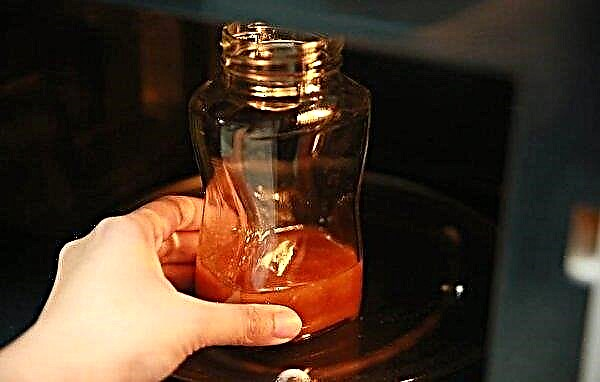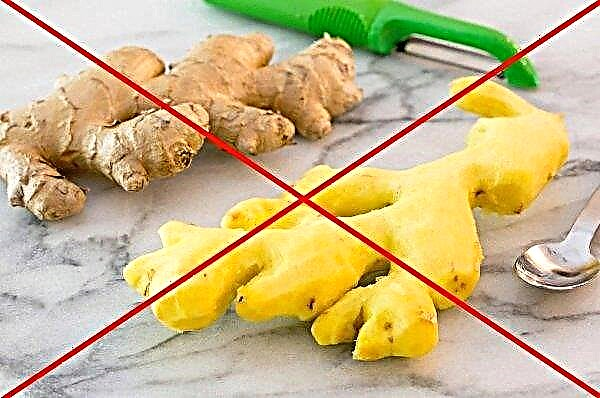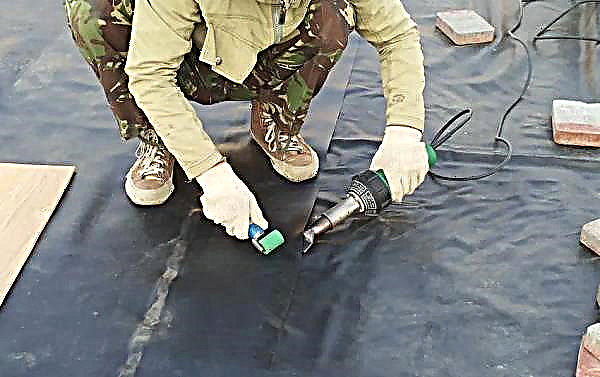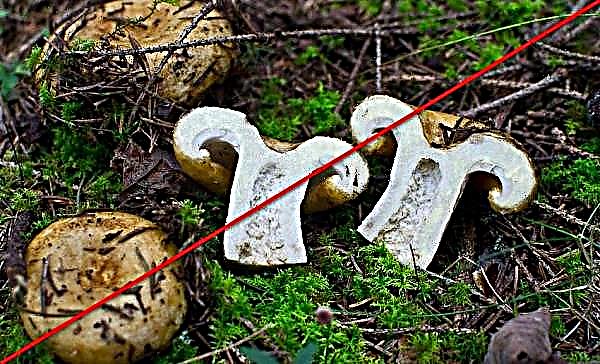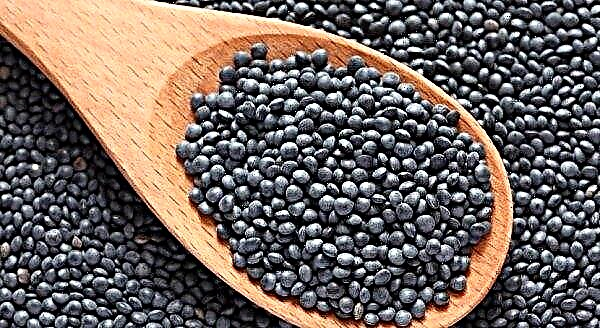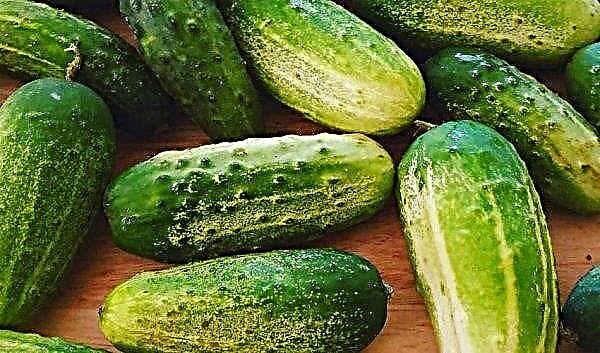We are used to the fact that ripe tomatoes must always be red. Another shade of the fetus indicates its immaturity. But in the world varieties of this culture have long existed, the fruits of which are ripe yellow, pink, orange, green, white. One of such non-standard varieties (Torbay tomato f1) will be discussed in the article.

Torbey f1 tomatoes are first-class hybrids. This is evidenced by the prefix "f1". The hybrid was bred by Dutch breeders in 2010. The plant turned out to be tall: 75-80 cm in open ground, up to 150 cm in a greenhouse, sprawling and powerful. Gives large fruits, up to 210 g, with fleshy, sweet and sour flesh of pink color. The shape of the fruit is flat-round, slightly ribbed. They ripen in 100-110 days from the moment of sowing the seed, and ripen almost simultaneously and bear fruit until October.
Advantages and disadvantages
- The advantages of the variety include:
- resistance to disease;
- high productivity;
- tolerates drought;
- keep a look at long transportation;
- stored for 2-3 weeks;
- good taste;
- universality;
- simultaneous ripening;
- uniform, marketable.
Did you know? The scientific name of the tomato culture — Solánum lycopérsicum, from Latin translates as «wolf peaches».
- The disadvantages include:
- a tall and sprawling bush in need of pruning and garter;
- cannot be landed in the second year;
- although the variety is unpretentious, it needs regular care.
Self-growing seedlings
Seedlings of Torbay tomato can be grown independently. The process does not require special knowledge and skills. Seeds are purchased in a special store, and then everything is done as described below.

The timing
Harvesting containers and soil for seedlings is necessary in the fall. But sowing is carried out in the spring, most often in March. On the packaging with seeds it is usually written in which period it is most favorable to sow.
The soil
The soil is chosen neutral. You can choose a universal substrate or prepare it yourself by mixing sand with peat in equal proportions. There is a variant of another mixture: sheet land, peat, humus, sphagnum.
Before planting seeds, the soil is recommended to be decontaminated. It is easiest to do this by freezing. If the winter is frosty, then the soil is taken outside for five days, then transferred to the heat for a week, and then again to the cold. If the street temperature is above -15 ° C, then you should use a freezer.
Did you know? Biological relatives of tomato — tobacco and potatoes. They are all solanaceous.
Capacity for growing
As containers, you can use cups, special plastic containers or small wooden boxes - to whom you like.

Some people think that peat pots are best for seeds. But whatever the packaging, it must necessarily undergo a disinfection procedure.
Seed preparation
Seed preparation includes mandatory decontamination and soaking procedures, as well as screening. Sorting is carried out using saline. Once in this liquid, the seeds will behave as follows: empty will be on the surface, and full will drown.
Next, carry out the soaking procedure. A flap of fabric is prepared (preferably a light shade so that the seed is noticeable on it). Sprinkle the seed over it and tie it in a knot. In this form, the seeds are immersed in warm water (22-25 ° C) for three to four days.
The penultimate stage of preparation is disinfection. For this, the seed is soaked for a quarter of an hour in a 0.5-1% potassium permanganate solution. After washed under running water. Finally, they are treated with biostimulants.
Video: How to prepare tomato seeds for planting
Sowing seeds
Ready seeds can be planted. For this, grooves with a depth of 1-1.5 cm are made in a container with earth. The seeds are laid out in them, maintaining a gap of 20 mm between each seed. There should be a distance of 30-40 mm between the grooves. Top with a thin layer of mulch or peat. The soil is sprayed with water, and the tank is covered with a film.
Seedling Care
For seedlings to appear, you need heat, so seedlings are placed in a room with a temperature of + 25 ° C. You will need good lighting (14-18 hours a day). Seedlings are watered once every seven days with settled water at room temperature. When the first shoots appear, the film is removed, and the temperature drops to + 15 ° C.

After seven days, the temperature is again raised (up to + 20 ° C). With the advent of one or two true leaves, they pick, so that the plants do not squeeze each other, and the root system develops normally.
Important! Every two weeks, it is necessary to make fertilizing with mineral fertilizers. This will speed up «landscaping» seedlings and strength gain.
Seedling hardening
A week before the planned planting of young plants in the ground they are hardened. The procedure is carried out as follows: a container with plants is taken out to the street and left for 20-30 minutes. The next day, the duration should be increased so that on the last, seventh, day, the seedlings were in the air for 2-3 hours.
Planting seedlings in open ground
Seedlings grow to the size needed for planting in about a month. It is planted in open ground when night frosts leave, and the soil warms up to + 8 ° C. The weather should be cloudy, calm and dry. Since autumn, the bed should be fertilized and loosened.

In the spring they dig it up and prepare holes with a depth of 0.3-0.4 m. Between them there should be a gap of at least 0.4-0.5 m. The hole is disinfected with a hot solution of potassium permanganate and filled with superphosphate. The plant should be separated from the container, and, without shaking the ground, put in the hole. Sprinkle with earth and pour over.
Important! On the bed, the soil should be light, fluffy, enriched, with a neutral or slightly acid reaction. The acidic soil is lime.
Growing Features
The main thing in Torbay f1 tomato care is timely watering, pinching and garter.
Watering
The culture is poured into the wells with a frequency of once every two days. Water needs to be consumed a lot. Earth should be well saturated with moisture. It is advisable to carry out the irrigation procedure after lunch and on a cloudy day. If the bush is mulched, you can water less often, since the mulch retains moisture.

Top dressing
After planting seedlings in open soil, it must be fed after 1.5 weeks. Then, when the second brush blooms, fertilizers are again applied. And the last feeding is carried out when the fruits begin to ripen. For fertilizer, it is advisable to choose ammonium nitrate or borofoska.
Stepson
Since the tomato bush grows very spreading, it must be stepson, leaving one - a maximum of two stems. In addition, on one stem the fruit is formed large. When the shoot grows to 50 mm in length, it should be removed. At the same time, all stepchildren should not be cut off.
Video: How to plant tomatoes properly
You must first remove the longest, and after 3-4 days - those that were smaller. When pruning the shoots, yellowed and withered foliage should be removed in parallel. When the first ovary appears, the shoots need to be clipped at the end, so that all the forces of the plant are directed to the formation of quality fruits.
Soil care
To minimize the maintenance of the garden with tomatoes, the ground should be mulched with straw, hay or dried weeds 5 cm or more thick. This will help reduce the frequency of irrigation, eliminate the need to constantly loosen the soil after each irrigation, and protect against intensive weed growth.
Between the rows the soil is loosened once every 14 days.
The first hilling of the bush is carried out 10-15 days after transplanting seedlings. The following procedure will help determine the appearance of the plant stem. If tubercles-growths appeared on it near the soil, then, most likely, the tomato is going to release new roots in order to get more nutrients. So, you need to again spud the bush.
Bush tying
The bush of Torbey is densely covered with ovary, so that it does not break under the weight of the fruit, and the tomatoes lying on the ground do not attack rot, the plant must be tied up.
When the bottom of the stem is ventilated, diseases and pests will attack it less. Tie the bush to a peg immediately after landing in the ground, and then when it gains height.
Preventative treatment
Although the Dutch managed to develop a variety resistant to diseases and pests, some of them can still attack diseases and pests and spoil the crop. In order to minimize the likelihood of a problem, you must:
- observe watering regimen;
- in time to loosen and fertilize the soil;
- provide enough lighting.
It happens that, despite the observance of all the rules, the base of the stem becomes black. This is how the black leg disease manifests itself. It is impossible to overcome it. The sick bush needs to be torn out and burned. Spider mites, Colorado beetles and aphids may also appear. Chemicals will cope with them.
From the foregoing, we can conclude that Torbay tomato f1 is very easy to care for. Even a novice gardener is able to cope with planting crops and, having spent a minimum of energy, get a great product.

